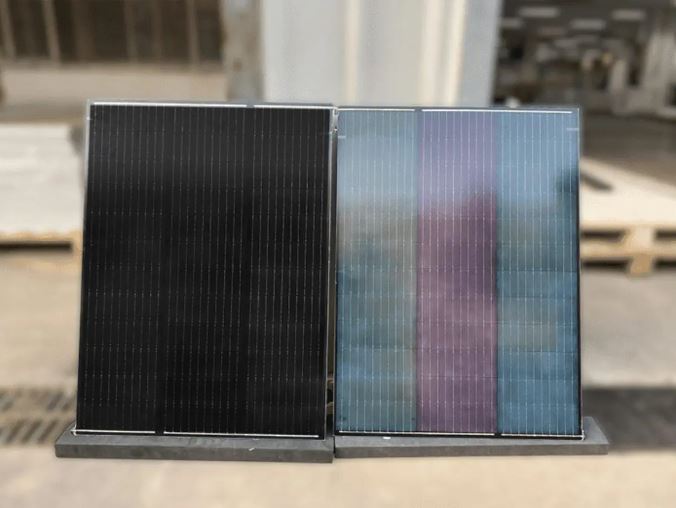From peacock feathers to colorful solar panels
(Sustainabilityenvironment.com) – Colorful solar panels that improve the integration of photovoltaics in the building both in terms of aesthetics and performance. And that they do not require exorbitant costs for large-scale production. An impossible goal? Not for researchers at Shanghai Jiao Tong University, China. Here scientists Tao Ma, Ruzhu Wang and colleagues have developed a technique to “color” cells and modules using a cheap and easy to apply the material.
The inspirational idea comes directly from Mother Nature but it is not a novelty for the technological world. The group has resorted to the so-called photonic crystals, optical nanostructures in which the internal refractive index changes periodically influencing the propagation of light. In detail, the phenomena of refraction or selective absorption of photons by these reticular structures allow to creation of various colors. It is the same system at the base of the apparent pigmentation of some animals, from butterflies to peacocks.
A pinch of ZnS to color the cells blue, green and purple
For years the photovoltaic industry has been trying to apply this technology to cells. However, the attempts made so far have proved too expensive to implement on a commercial scale, giving products in many cases an annoying iridescence. The Chinese team has studied a recipe that could solve both problems. In detail, the researchers used colloidal zinc sulfide (ZnS) microspheres. The team sprayed a thin mixture onto the surface of the cells, forming a kind of film or surface photon glass. The crystalline layer is traversed by most of the light but reflects some selective colors based on the size assigned to the ZnS spheres.
Read also The first organic solar cell “recycled”
Using this approach, the team created colorful solar panels with shades of blue, green and purple. The most important aspect of the research is that the final product still manages to be commercially competitive. The conversion efficiency, once the photon crystals were applied, increased from 22.6% to 21.5%. Only 1.1 percentage points less. Scientists have also found that their colorful photovoltaic modules are able to maintain appearance and performance over time. The next step? Evaluate new processes to make colors more saturated, while increasing their range. The research was published in the journal ACS Nano.

